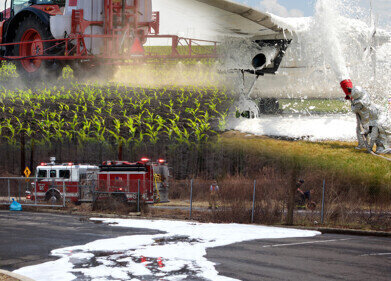Groundwater monitoring
New monitoring wells built in US to track water contamination
Aug 30 2012
New monitoring wells have been installed in Delaware, US, which will allow local hydrogeologists to learn more about water contamination.
Eight water monitoring devices have been installed, which is the first time such technology has been implemented since 1977. Scott Andres, a hydrogeologist and senior scientist at the Delaware Geological Survey, said the information gathered will be more informative than previous water-monitoring efforts.
"[Snapshot studies] uncovered some potential problems," Mr Andres said. "We hope to improve the information base so we could pass that back-of-the-envelope type style of science to more quantitative and predictive ways of evaluating water supply."
Groundwater is the primary source of drinking water in Delaware, which makes the monitoring of water contamination a top priority. It is thought that around 32 wells may be drilled over the next three years in New Castle and Kent counties, Delaware, into underground rocks in which groundwater can be extracted.
The project was initiated in 2008 after the state appropriated $600,000 to fix the lack of monitoring infrastructure for water resources in Delaware. Junior Lynn Walter, an ecology and wildlife conservation major, said there have been consequences from these lax environmental monitoring practices, but the new wells should lead to better data.
"I think the premise behind the project is great," Ms Walter said. "Monitoring groundwater should make determining water quality easier with more samples to work with, and if there are any trace amounts of pollution detected then it should be easier to stop contaminants from spreading."
This project differs from past water monitoring efforts in that it has a long-term and far-reaching effect. Additionally, the wells provide significantly more data, which Mr Andres said provides a more complete view of how much water is available underground, its direction of travel and where contaminants are being introduced.
Senior Daniel Schwam, who is also involved in the project, said: "I feel that a project along these lines could significantly improve the quality of drinking water for Delaware’s residents."
Posted by Joseph Hutton
Digital Edition
IET 35.2 March
April 2025
Air Monitoring - Probe Sampling in Hazardous Areas Under Extreme Conditions - New, Game-Changing Sensor for Methane Emissions - Blue Sky Thinking: a 50-year Retrospective on Technological Prog...
View all digital editions
Events
May 06 2025 Nuremberg, Germany
May 10 2025 Karachi, Pakistan
May 11 2025 Vienna, Austria
May 11 2025 Seoul, South Korea
Salon Analyse Industrielle & Instrumentation
May 14 2025 Paris, France






.jpg)


_(4427399123)-(2).jpg)









